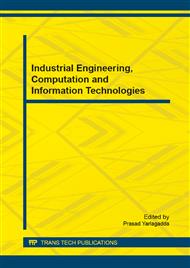p.413
p.418
p.424
p.428
p.433
p.437
p.442
p.449
p.453
Radar Target Recognition Based on Sparse Representation of Dictionary Optimized
Abstract:
The high range resolution profile samples are numerous and sparse. But less radar target recognition algorithms based on high range resolution profiles (HRRP) employed the sparseness of HRRP samples. A new radar target recognition algorithm using a fast sparse decomposition method is presented here. This algorithm was to be carried out in three major steps. First, the Gabor redundant dictionary was partitioned according to its atom characteristics to decrease the atoms storage. Then, the matching pursuit algorithm was improved by the genetic algorithm and the fast cross-correlations calculation to accelerate training samples decomposition and generate the taxonomic dictionaries. Finally, the reconstruction errors of testing samples were used to recognize different radar targets. The simulations show that this method can resist noise disturbs and its recognition rate is high.
Info:
Periodical:
Pages:
433-436
Citation:
Online since:
December 2014
Authors:
Price:
Сopyright:
© 2015 Trans Tech Publications Ltd. All Rights Reserved
Share:
Citation:


